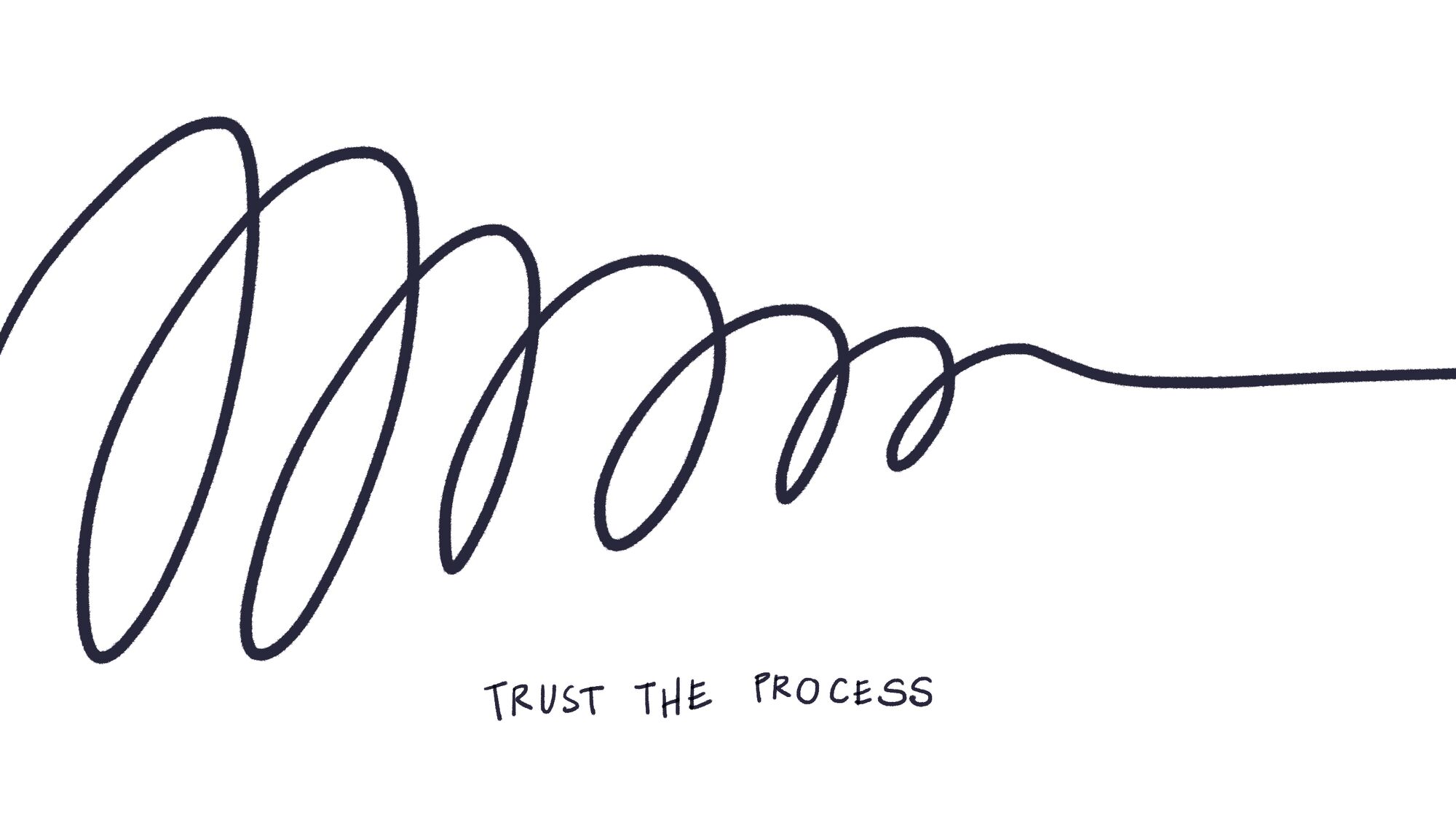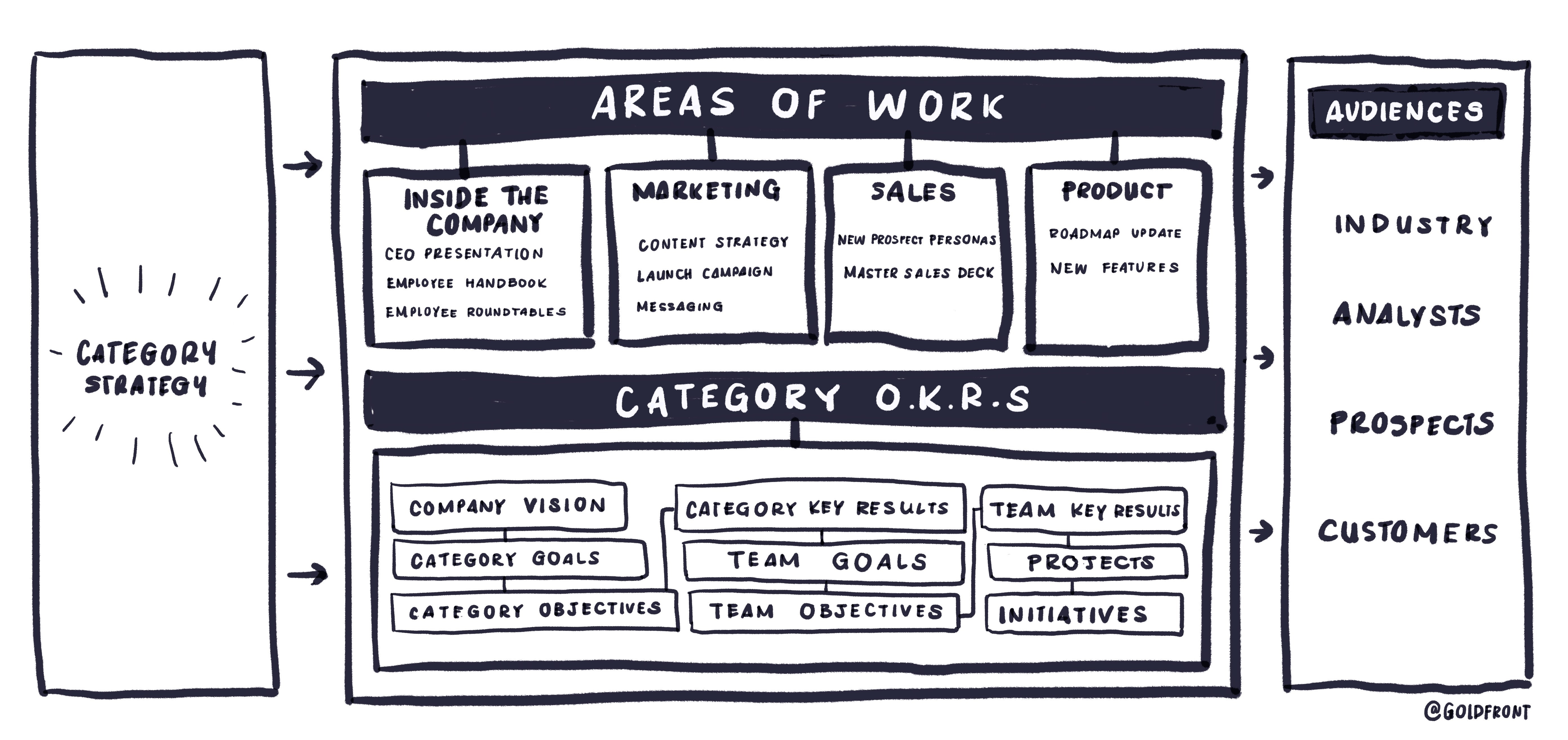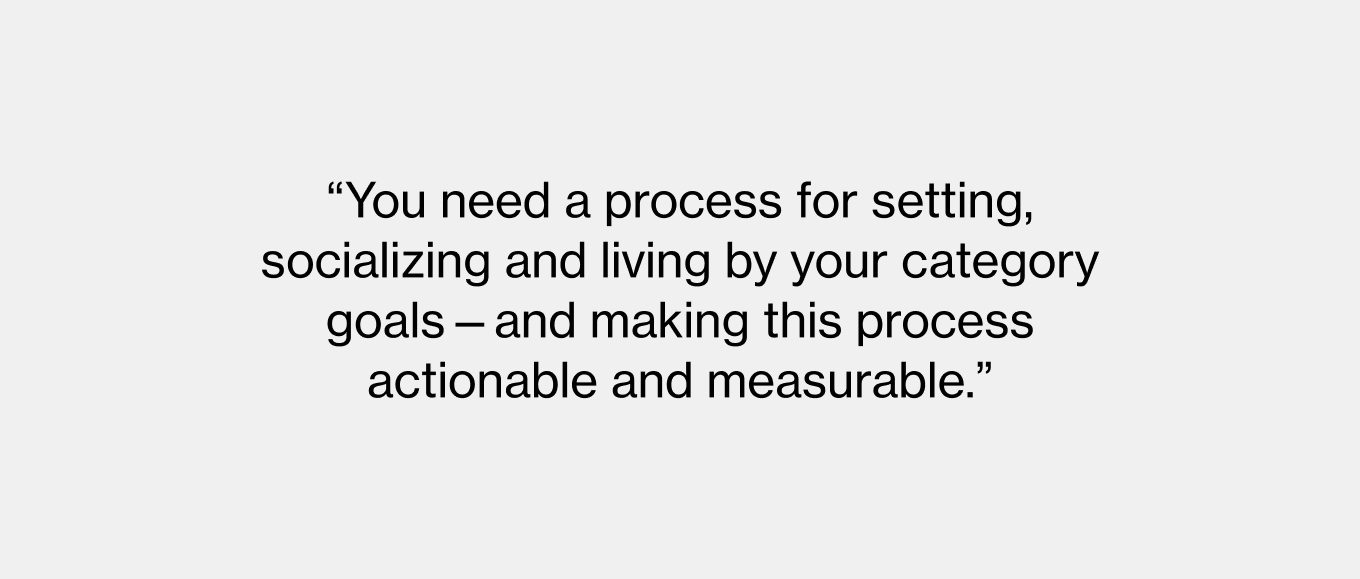The Strategy’s Done. Now What?
Making the leap from thinking to making.


CEOs, the ones I know, love spending time in the world of ideas. They’re in their happy place imagining a better future and crafting a compelling strategy to get there.
But there are real limits to being a visionary. In our devotion to our dreams, we invariably leave something valuable unattended to. Such is the case with CEOs’ love of ideas and their corresponding hesitation to commit to a single category idea and go all in on it.
I see it in the projects we do. There comes a crucial moment when our clients need to move from strategy to execution. From Category POV to planning the Category Launch and designing the brand. The category doesn’t really exist yet. It’s just an idea. That’s the moment that, if things are going to go south, they will.
Why is this? My sense is, in this transition from dream to reality, fear creates friction.
What if, by choosing to have a distinct perspective, we’re defining ourselves too narrowly, missing opportunities?
What if what we’re about to promise is too big to live up to?
Or, worst of all: What if we build it, launch it, and shout it from the rooftops…and nobody cares?
As a category creator I know these fears first-hand. When doubts build, it’s hard to be decisive.
To make it through this moment, you need a process.
In other words, be like Jerry Seinfeld. He gets up every day and tackles a thorny, ambiguous problem: “How to be funny."
It may sound trivial. But the stakes are high. Today’s rising comic is tomorrow’s old news. Burnout is rampant in his field. Irrelevance is always lurking. How has Seinfeld managed to find longevity and continued success?
He sticks to the process.
For writing, he follows five steps with every joke (The first step: Start with a funny topic). In his life, he holds to routines and rituals. He only writes on yellow pads. Famously, he borrowed a move from Jackie Gleason in The Hustler, splashing water on his face before every show.
By sticking to a process, he has created a reliable, repeatable system for writing and performing jokes. And in turn, he has become arguably the most successful comedian on earth.
If you’re about to bring a new category to the world, you need a clear process you can trust. At Gold Front, we use our Category Launch Framework. We use it to map out the launch journey for our clients and show them the steps their company must take to get from A to B.
You can use it too. What follows is an overview of the framework.
It’s built around two components: the Areas of Work you must master, and the Category OKRs you’ll use to set, socialize, and accomplish goals.

Areas of Work
Category design is a whole company effort, but it helps to break things down into four key workstreams: Inside the Company, Product, Sales, and Marketing.
We’ll cover inside the company first.
Inside the Company
Before launching to customers, you need to get every employee aligned and inspired around your new category and help them see their role in making it a reality.
Launching the category inside the company starts with you, the CEO, standing up in front of the company and presenting your category POV. Your presentation starts with a simple statement: “Today we are changing the trajectory of our company.” It should inspire and offer your people a new North Star to aim for.
People are wary of change. Some of your staff may point out why your plan won’t work. The trick here is to stay open to any input you get, without overindexing on the feedback. People often just need an opportunity to question before they can accept. This presentation is just the beginning of many conversations with staff. Employee roundtables can be a great way to build understanding and enthusiasm.
Marketing
Category creation is first and foremost about changing minds. That means putting together a compelling piece of hero content—for example a visionary CEO presentation or a video that tells a riveting category story—to lead all marketing activities.
Many of our clients will also rebrand at this time so they can further stoke excitement and show up in the world as the leaders they say they are.
But before any of this, you need a plan for how all marketing activities will work together to change minds.
A well-defined Content Strategy is a must-have. It will define your key audiences, what messages must reach each, via which channels, in what point in their journey.
The result is a single plan that guides and holds together all your storytelling: from the new brand and hero content to hard-working copy for new product features. All of it reinforcing and building the category story.
There’s much more to say here. We’ll explore how winning marketing teams approach Launch Day in future episodes.
Sales
Sales is the frontline where your category story meets the pressures of real prospects and customers. Sales reps are constantly having the veracity of their pitch tested and questioned.
So it’s not surprising that they’re often the most skeptical audience inside your company. Use their skepticism as an opportunity. First you must spend time with the sales team to clearly connect the dots between the bigger category narrative and the more tactical reasons people buy, like features, price and service. If the sales reps bring up questions you can’t answer, you can be sure your customers will, too. Use this as an opportunity to revise your category POV—and make your argument more bulletproof.
Next, you’ll need a new master sales deck that frames your sales pitch within the category narrative. This deck tells the story of a new way that businesses win, arming your sales team with the argument for why this new category is necessary, and proof that your product offering leads it.
Product
To create and win a new market your product must pay off the Category POV.
It’s also the most difficult thing to change. It’s easier to change copy on the homepage than to build and launch new features. But if product doesn’t pay off the lofty promises of your marketing, you will fail.
Once strategy is done, you’ll start your product activities by reviewing and updating your product roadmap. There may be category-right features on the current roadmap that can be launched up sooner. Or you may need to come up with new features and add them to the roadmap. Some features will become less important or dropped altogether.
Category must lead here.

Category OKRs
The second big component: You need a process for setting, socializing and living by your category goals—and making this process actionable and measurable.
Category OKRs (Objectives and Key Results) are the lingua franca of getting things done. They help your people align, communicate and achieve.
The work happens in steps. Starting with the most general goals first.
Successful OKRs have 3 or 4 objectives at the very top. Executive leadership will set these. Here are the objectives we see most often:
• One objective for revenue or financial targets.
• One for the change you want to make in the customer’s mind.
• One for the change you want to see in employee engagement—relative to the category.
Once the executive team creates a set of draft OKRs, you’ll have your Product, Sales, and Marketing teams build supporting objectives and key results under these high-level goals. All vetted and approved by leadership. This helps every team see and own their role in building the category.
So why are OKRs, in particular, so well-suited to category launch—and the longer term work of category building?
OKRs connect strategy to action: Category creation can be ambiguous work. You act over here, you create influence elsewhere, and, over time, your industry landscape starts to move in your direction. OKRs translates this murky effort into clear, interconnected actions.
OKRs are social: By making OKRs explicit and transparent, you create shared expectations and accountability—within teams, across them, and up to leadership. This helps keep every employee, and every team, aligned as they undertake the big job of category building.
OKRs are measurable: They give you a way to gauge progress, to see what’s working and what’s not, and the opportunity to try things, learn and adjust.
We help guide our clients through this with a kind of “progressive OKR dashboard,” a living document that grows and evolves over time.
So that’s the framework. To recap:
• There is a challenging moment where you need to switch from the world of vision and ideas and move into execution.
• Process helps you make that switch and move forward.
• Category Launch starts inside the company, then moves out into the world.
• This is a company-wide effort: you need to get the areas of Product, Sales, and Marketing all in sync to successfully launch your category.
• None of this matters without a mechanism for getting things done. Category OKRs are that mechanism.
If you follow our Category Launch Framework you will find it is more than just a Go-to-market process. It’s a system designed to weave your category idea into the very fabric of your company, to ensure the category lives within every employee, across every team, facing out to your customers and the market, today and in the future.
Because that’s how category creators win.
Next.
